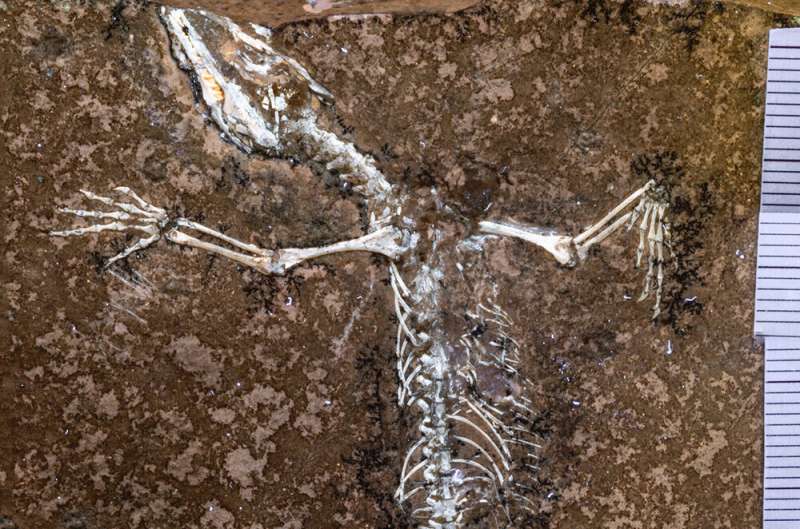Paleontologists have identified a new ancient reptile species from the Solnhofen limestone slabs in Germany, thanks to a serendipitous discovery by a Ph.D. student. This revelation comes after Victor Beccari, a doctoral candidate at the Bavarian State Collection of Paleontology and Geology and LMU Munich, found a fossil counterpart at the Natural History Museum in London. The research, published in the Zoological Journal of the Linnean Society, introduces the new species as Sphenodraco scandentis.
The discovery sheds light on the biology of ancient reptiles, with the fossil dating back 145 million years. Originally, the lizard-like fossil was thought to belong to the species Homoeosaurus maximiliani. However, the newly found counterslab, containing most of the bones, has provided crucial insights, revealing it as a distinct species closely related to the modern tuatara of New Zealand.
The Significance of Solnhofen Limestone
The Solnhofen limestone slabs, located in the valley of the Altmühl between Solnhofen and Kelheim in central Bavaria, are renowned for their exceptional fossil preservation. This region is famous for yielding the “urvogel” Archaeopteryx among other significant finds. The fossils here are preserved in a unique manner, embedded flat within limestone layers. Typically, when these slabs are split, part of the skeleton appears in one slab and the body impression in the counterslab.
“Apparently, the two parts of this fossil were sold separately almost a century ago to the museums in Frankfurt and London, where they can still be visited today. However, the connection between the two plates was lost. Until now, scientists were only aware of the Frankfurt half,” Beccari, the lead author of the study, explained.
Insights into Rhynchocephalian Evolution
Today, the only living species of the lizard-like Rhynchocephalia is the tuatara from New Zealand. However, during the Triassic and Jurassic periods, rhynchocephalians were widespread, coexisting with dinosaurs across nearly all continents. The Solnhofen Archipelago is particularly noted for its diverse Rhynchocephalia fauna, with hundreds of well-preserved skeletons discovered to date.
“The Solnhofen Archipelago is known for its species-rich Rhynchocephalia fauna. We know of hundreds of well-preserved, almost complete skeletons of these lizard-like reptiles from there. Every new fossil provides us with more insights into their evolution and way of life, including Sphenodraco scandentis,” Beccari stated.
Understanding Sphenodraco scandentis
The newly identified fossil displays unique characteristics that set it apart from previously discovered Rhynchocephalia. Notably, Sphenodraco has very long limb bones relative to its small body size. This anatomical feature suggests that the reptile was likely an adept climber, potentially making it the first known arboreal species within the rhynchocephalian group.
A comparison with modern lizards possessing similar body structures supports the hypothesis that Sphenodraco scandentis lived in trees. This finding offers new perspectives on the ecological niches occupied by ancient reptiles and their evolutionary adaptations.
“An arboreal rhynchocephalian from the Late Jurassic of Germany, and the importance of the appendicular skeleton for ecomorphology in lepidosaurs,” Victor Beccari et al, Zoological Journal of the Linnean Society (2025). DOI: 10.1093/zoolinnean/zlaf073
Future Directions in Paleontological Research
The discovery of Sphenodraco scandentis underscores the importance of continued exploration and study of existing fossil collections. As new technologies and methodologies develop, they offer the potential to uncover further insights into the lives of ancient species.
With this new species identified, researchers are optimistic about what other secrets the Solnhofen limestone slabs may hold. As Beccari and his team continue their work, the scientific community eagerly anticipates further revelations that could reshape our understanding of prehistoric life.

















